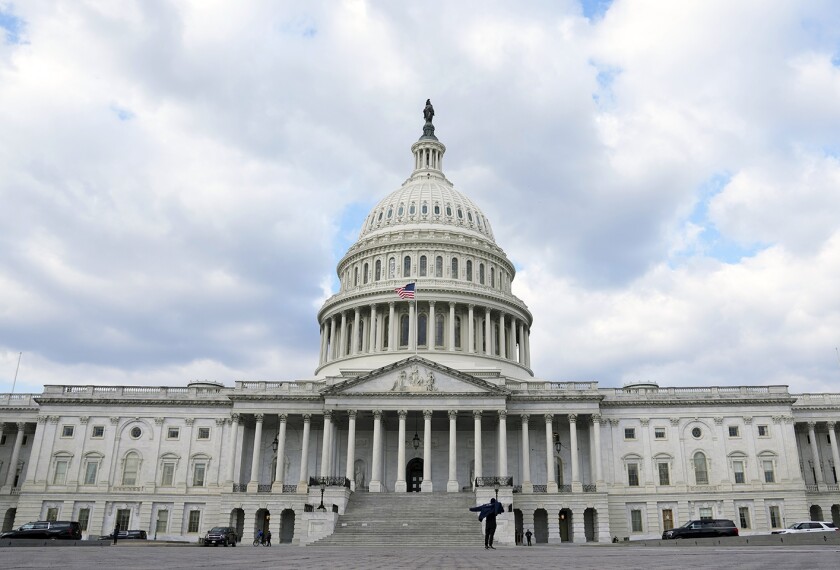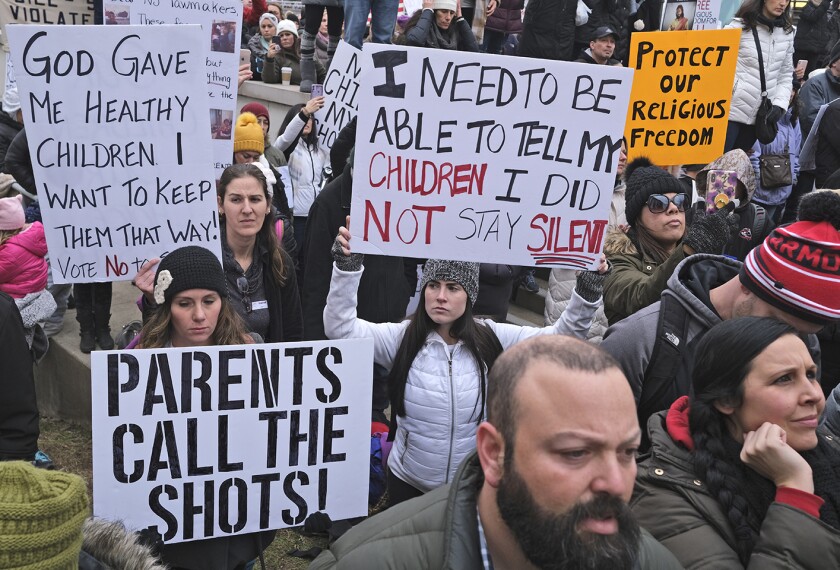Governors of seven Northeastern states released a statement in support of in-person learning with “appropriate protections” Thursday as schools around the country confront climbing coronavirus rates in their communities.
Despite growing hospitalizations and cases in many parts of the country, members of the White House coronavirus task force also reiterated Thursday the Trump administration’s stated opposition to school closures.
The statements came a day after New York City schools, the nation’s largest district, announced sudden plans to switch back to remote learning. It also came as the Centers for Disease Control and Prevention urged Americans to forego Thanksgiving celebrations with people outside their households, emphasizing the risk of spreading the virus.
Separately, state leaders in West Virginia and Kentucky on Wednesday ordered mass closures in advance of the holiday as cases there climbed upward.
The statement bolstering the case for in-person schooling was issued by Pennsylvania Gov. Tom Wolf, New York Gov. Andrew Cuomo, New Jersey Gov. Phil Murphy, Connecticut Gov. Ned Lamont, Delaware Gov. John Carney, Rhode Island Gov. Gina Raimondo, and Massachusetts Gov. Charlie Baker. The bipartisan coalition of leaders, who have coordinated their states’ responses to the public health crisis, included the statement in a press release calling on colleges and universities to take extra precautions to slow the spread of COVID-19 as Thanksgiving approaches.
“Medical research as well as the data from Northeastern states, from across the country, and from around the world make clear that in-person learning is safe when the appropriate protections are in place, even in communities with high transmission rates,” said the governors’ statement. “In-person learning is the best possible scenario for children, especially those with special needs and from low-income families. There is also growing evidence that the more time children spend outside of school increases the risk of mental health harm and affects their ability to truly learn.”
At a press briefing Thursday, Vice President Mike Pence, who leads the White House coronavirus task force, and CDC Director Robert Redfield cautioned state and local leaders against “emotional responses” like closing schools.
“President Trump wanted me to make it clear that our task force, this administration, and our president does not support another national lockdown, and we do not support closing schools,” Pence said.
After state leaders across the country ordered blanket school closures in the spring, some epidemiologists have pointed to new research about children’s risk of transmitting the virus to call for a less drastic approach. But school leaders must face a patchwork of inconsistent guidance and conflicting political pressures when making such decisions, leading to a wide variety of responses around the country.
Cuomo, one of the governors in the coalition, has notably sparred with New York City Mayor Bill de Blasio, a fellow Democrat, over the mayor’s decision to close the city’s schools after weeks of efforts to keep them open. Many other large urban districts have operated in remote learning mode since the start of the school year.
As Education Week reported Wednesday, New York City’s criteria for closing schools—when the number of positive COVID-19 tests, averaged over a week, breached 3 percent—was much more conservative than that set by other states and districts. Teachers in the early hot spots for the virus have pointed to crowding and poor ventilation as reasons to keep schools closed, and many families had opted to keep their children in remote learning anyway.
The governors’ statement does not call on all schools to remain open, and it stresses the importance of appropriate precautions. In Rhode Island, for example, Raimondo announced a “two-week pause” Thursday that will start Nov. 30. During that time, high schools will move to mostly remote instruction, she said in a news conference, noting that high schoolers tend to be at higher risk for severe illness and spreading the virus.
The lead up to Thanksgiving, combined with spiking rates of the virus around the country, has been a stress-inducing time for school administrators who are concerned about increased transmission when students return.
The CDC stressed the importance of avoiding Thanksgiving travel and large celebrations in a call with reporters Thursday.
“It’s been a long outbreak, almost 11 months now, and people are tired,” said Henry Walke, COVID-19 incident manager for the CDC. “And we understand that, and people want to see their relatives and their friends in the way they’ve always done it. But this year, particularly, we’re asking people to be as safe as possible and limit their travel.”






